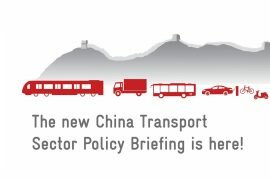Co-authored with Sandra Retzer.
Over the past decades, the People’s Republic of China not only underwent rapid urbanization and an impressive socio-economic transformation but also a tremendous development of its transport infrastructure. Today China has the longest high-speed railway network and has just brought its 350 km/h Fuxing (复兴 – renaissance) bullet train back on line, connecting Beijing and Shanghai (1,300km) with just four and a half hours of travel time. The same impressive development counts equally for the expansion of China`s highway, aviation, shipping and public urban transport system.
However, along with progress came challenges. Today, the transport sector is also associated with traffic congestion and clogged cities, this accounts for the high shares of carbon emissions and is a significant source of noise and (urban) air pollution with up to 30 percent shares of particulate matters in some of the big cities.
The Chinese government is aware of these threats and therefore has been pushing hard for more sustainable infrastructure development since the 12th Five-Year Plan (2011-2015). The 13th FYP for Economic and Social Development of the People`s Republic of China 2016-2020 along with the submission of China`s Intended Nationally Determined Contributions (INDC) in 2015 was the turning point as this was when the development goal of a low carbon transport system was described in these documents for the first time. Together with China`s engagement and innovation strength in IT, Big Data and technology applications such as smart bike sharing, electro mobility or autonomous driving, this represents the country`s ambition and commitment to seriously tackle global climate change and domestic challenges towards more eco-friendly transportation and more livable cities.
The series Overview of China`s Five-Year Plans in the Transport Sector aims to provide an overview of the system of Five-Year Plans in China and how the transportation sector is steered by these political development blueprints. Furthermore it provides insights into how sector specific Five-Year Plans on national, provincial, city and county level shape transport infrastructure planning and implementation, and ensure an innovation driven future.
This first edition will focus on the 13th FYP for Economic and Social Development of the People`s Republic of China 2016-2020, its role as a central government guideline for sustainable and low carbon transport development and as a framework for the implementation bodies on different administrative levels in China.




Comments are closed.